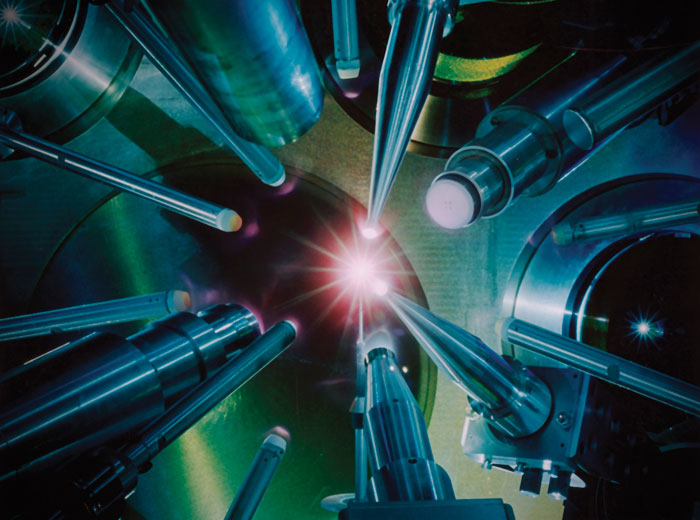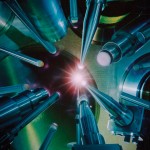
Inertial Confinement Fusion at the National Ignition Facility
America faces long-term energy challenges. While fossil fuel production is increasing, the U.S. still needs to invest in next-generation energy technologies to ensure supplies of clean, safe and abundant energy for decades to come.
Inertial Confinement Fusion is one of the two main approaches to fusion energy. The National Ignition Facility (NIF), a leading Inertial Confinement Fusion laboratory part of the Lawrence Livermore National Laboratory, uses the world’s most powerful lasers to compress a fuel pellet. With heat and pressure, the lasers force the atoms in the fuel pellet to fuse together, releasing enormous amounts of energy.
ASP’s fact sheet, Inertial Confinement Fusion at the National Ignition Facility, details NIF’s significant achievements over the past few years. Over 1,200 scientists, engineers, technicians and administrators at the NIF are working towards achieving “ignition” – producing more energy than is required – in the next several months. America should continue to support the NIF and build on its success.
check out our fusion mini-site here
Inertial Confinement Fusion at the National Ignition Facility








[…] to America’s long-term national security. ASP has brought out a fact sheet detailing “Inertial Confinement Fusion at the NIF.” The NIF is seeking to prove that fusion energy can be an important part of our national […]
[…] Inertial Confinement Fusion at the National Ignition Facility […]
[…] ASP released a fact sheet on the NIF last month. To read it, click here. […]
[…] ASP has followed the NIF’s work closely, and you can see a fact sheet that we have on their fusion research here. […]
[…] The NIF works by focusing its 192 lasers on an eraser-sized target, consisting of supercooled Hydrogen. In one laser “shot” – a time of less than a billionth of a second – the target is heated to more than 100 million degrees (hotter than the surface of the sun) and compressed at a velocity of nearly 700,000 miles per hour. In these extreme conditions, fusion – where the hydrogen atoms are ‘fused’ together to form helium – can potentially be achieved. This is the power of the stars brought to earth. […]
[…] To read ASP’s factsheet on the National Ignition Facility, click here. […]
[…] Inertial Confinement Fusion at the National Ignition Facility […]